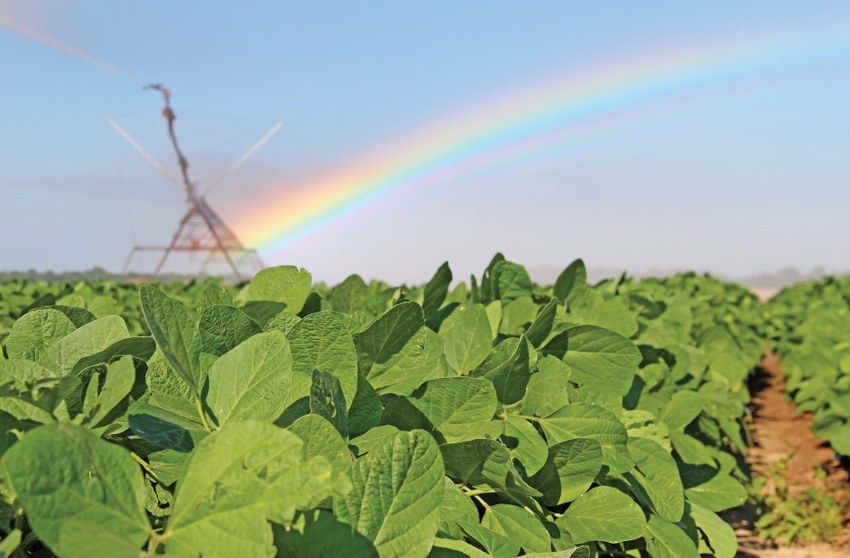
The Mississippi Soybean Promotion Board has started a project that will reduce the amount of water drawn from the state's alluvial aquifer by 25 percent. The initiative will encourage and educate producers on the use of water efficient tools such as PHAUCET, tailwater recovery and others. The project is already under way in three phases.
September 11, 2013

The Mississippi Soybean Promotion Board has launched an initiative to curtail the amount of water withdrawn from the Delta alluvial aquifer to irrigate crops.
The Sustainable Irrigation Project (SIP 2014) is designed to highlight and promote the use of practices and management tools that will result in a reduction in the amount of irrigation water that is applied to the state’s irrigated crop acres.
The project is already underway in three phases. The first was to gain the commitment of members of the MSPB, the Mississippi Corn Promotion board, the Mississippi Rice Promotion Board and the Mississippi Rice Council to use water conservation tools such as Pipe Hole and Universal Crown Evaluation Tool, or PHAUCET,and surge valveson furrow-irrigated corn and soybeans; multiple/side inletwater application to rice; zero gradefor flood irrigated rice and soybeans; tail-water recoveryfrom surface-irrigated crops; and center pivot irrigation.
The total acres committed to the listed water conservation tools by members of the above commodity boards is 102,310 as shown in the table.
| Acreage committed to each water conservation tool for irrigation of soybeans, corn, and rice by: |
|
Conservation tool | MSPB | MCPB |
PHAUCET | 16,400 | 8,900 |
Surge Valve | 2,600 |
|
Zero Grade | 1,100 |
|
Side Inlet | 3,050 |
|
Tail Water Recovery | 1,100 | 1,000 |
Center Pivot | 2,660 | 3,900 |
Several individuals are now using or are planning to develop surfacewater sources to replace water from existing ground wells. They are continually land-forming to improve surface watering efficiency and are continually increasing their acreage in tail water recovery.
These numbers are a conservative commitment, especially for the use of PHAUCET. Many producers have stated that they will apply this tool to more acres once they become familiar with its setup and use.
The second phase of the initiative is to solicit the participation of the Yazoo Mississippi Delta Joint Water Management District, Delta Council, Delta F.A.R.M., Mississippi Farm Bureau Federation and the Natural Resources Conservation Service.
The third phase of SIP 2014 is also underway. The MSPB will support programs to train producers and consultants on conservation tools.
For example, production has begun on a PHAUCET video to help users become acquainted with the tool, what input factors are needed and how to implement it on their furrow-irrigated acres. The MSPB is also providing significant financial support to the educational programs (MSPB Project 55-2013) that Jason Krutz, MCES irrigation specialist at the Delta Research and Extension Center, is now conducting and will continue to conduct during the coming months.
The rapid voluntary adoption of these and other water conservation techniques and technologies should provide a significant contribution toward conserving the Delta’s water resources as well as increasing irrigation efficiency and lowering producer costs. The commitment of the farmer leaders on these boards provides a meaningful impetus toward increasing the adoption of these and other practices that will conserve water and sustain the Delta’s irrigation capability.
Jan de Regt, MSPB chairman and Hollandale producer said Mississippi checkoff dollars have been heavily invested in irrigation research over the last 5 years “resulting in water-saving tools such as PHAUCET being applied by producers to a significant portion of the nearly 1 million acres of irrigated soybeans in the state.
De Regt, who uses PHAUCET to reduce the time it takes him to irrigate his nearly 3,000 acres of crops, said the promotion of PHAUCET and other water conservation practices on the majority of irrigated soybean acres in Mississippi “is an integral part of the MSPB’s recent efforts to take the lead in improving irrigation efficiency and reducing irrigation water use by as much as 25 percent.”
For more information on this and other MSPB projects and initiatives, visit www.mssoy.org.
You May Also Like



